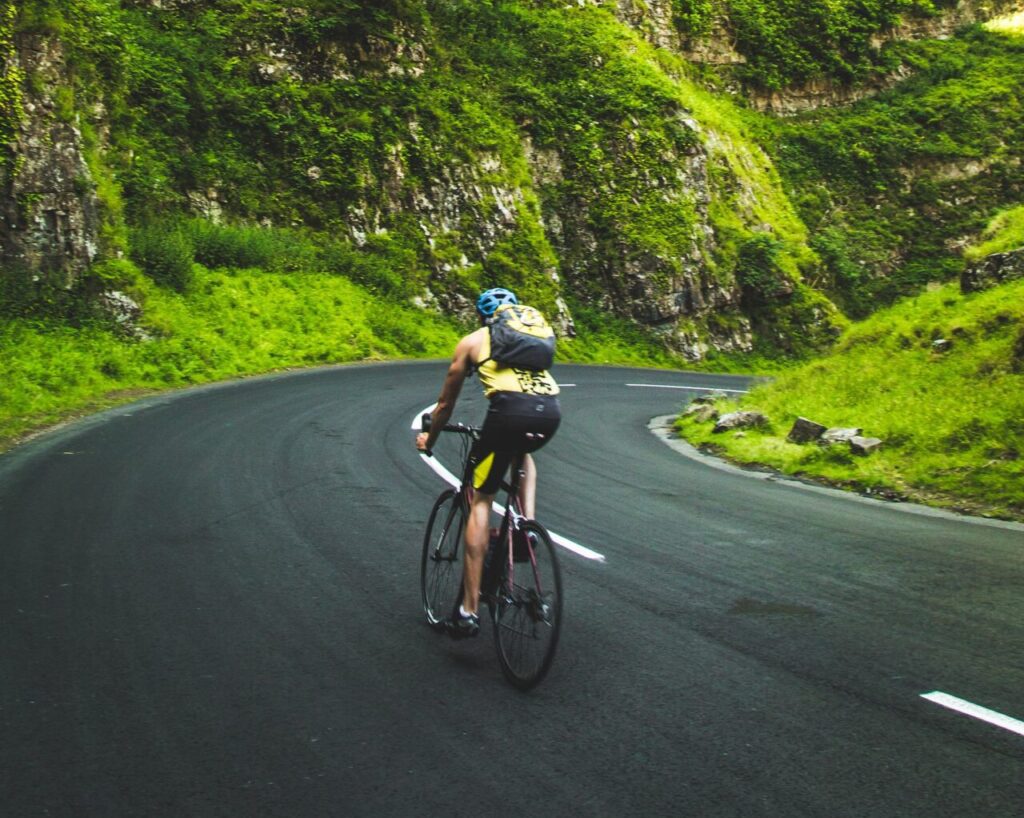One of the best ways to maximize your cycling speed is to cycle with a group. This is known as drafting and it will reduce your effort by about 40%. Although it sounds obvious, drafting should not be ignored. A group of cyclists will rotate who is in the front, conserving energy and keeping the whole party moving at a faster pace.
Increase tire pressure

One common misconception is that cycling tires are too high. While high pressure is not always detrimental to cycling speed, it can reduce comfort. Cycling enthusiasts should keep in mind that optimum tire pressure varies depending on terrain and rider size. When riding on rough roads, the optimum tire pressure will be lower than what’s recommended on the sidewall.
Proper tire pressure is critical to cycling safety. While maintaining the proper tire pressure can be a hassle at first, it will make the ride smoother and safer. It’s especially important to remember to check your tire pressure every now and then during longer rides. Using a tire pressure gauge will allow you to maintain a proper tire pressure for your cycle.
Tire pressure also affects how a bike handles impacts. A high pressure tire bounces around while riding, while a low tire absorbs most impacts. However, it’s important to remember that a hard impact can slash a tire or tube. Cycling scientists recommend maintaining a 15% sag in tires to maximize their shock-absorbing capabilities while minimizing rolling resistance.
Optimize your use of gears

If you want to increase your average cycling speed, it is important to be fit. This will help you average higher speeds and ride longer. It is also important to have a healthy cardiovascular system and a well-developed cycling muscle. By practicing progressive training, you can increase your average cycling speed. However, you should be aware that your average cycling speed will be affected by other factors. For example, the type of bike you ride may affect your average speed.
A lower gear may be appropriate if you have to climb steep hills or carry a heavy load. But you should remember that a lower gear also causes a lower speed. You may also find it difficult to balance a bike at such low speeds. Increasing gears will allow you to reach faster speeds and maintain a higher cadence.
The ideal range for cycling speed is between 80-100 revolutions per minute. It depends on several factors, including the strength and fitness of the cyclist, the distance covered per pedal turn, and the terrain. For example, if you’re riding in a rocky terrain, the optimal speed is 66 rpm, and you can reach it with more effort by increasing the gear.
Bike type matters

Cycling is a low-impact sport that can last for a lifetime. In addition, the length of time you have been riding will also affect your average cycling speed. In fact, older athletes will typically be slower than younger ones. Whether you are a competitive cyclist or just looking to improve your cycling speed, there are a few things you can do to improve your cycling speed.
One of the best ways to increase cycling speed is to include quality training time in your routine. During your ride, try to focus on sprint intervals and increase the length of each. This will help you get more mileage in less time, as well as help you recover faster. In interval training, you cycle at a higher speed for a short period of time followed by a short recovery.
The type of bike you ride also has a big impact on your average cycling speed. A lightweight, aerodynamic bike will roll more quickly and with less resistance. Additionally, the choice of materials used in the construction of your bike has an impact on the weight and dynamics of the bike. Mountain bikes, for example, are the slowest types to ride, while road bikes are the fastest. E-bikes and hybrid bicycles are also more aerodynamic, which will increase your average cycling speed.
Age as a factor

Cycling has many benefits, and it can delay the onset of ageing. It improves balance, helps maintain executive functions, and lowers the risk of all-cause mortality. While cycling does not make you live forever, it can slow the signs of ageing and help you stay fit into your fifties. The downside is that you will probably need to work well into your retirement years, so you won’t have the luxury of a generous pension or low house prices.
As we age, our muscles weaken and lose mass. Our heart and immune systems slow down, so cycling helps keep them in shape. Exercise can also increase our immune system. A study conducted on cyclists found that the decline in muscle mass was slower than in non-cyclists. Researchers also found that cycling can help reduce the signs of ageing.
Despite these risks, cycling is a great way to stay active and independent as we age. Decreases in physical and cognitive capacity are a major threat to our independence and mobility. Regular physical activity is one of the best ways to slow down age-related decline. It is also affordable, convenient, and environmentally-friendly. In addition to this, cycling has numerous health benefits for older people, especially those with chronic conditions. In fact, several studies have shown that cycling can improve cardiovascular health, quality of life, and metabolic responses in older people.
Change of terrain

When planning a training plan, cycling enthusiasts should focus on varying terrain. While the sport is known for its climbing terrain, too much focus on steeper mountains can hinder their ability to ride fast and efficiently on flat surfaces and rollers. Trainright provides resources for increasing cycling speed on rollers and flat surfaces and can help cyclists optimize their training for the terrain.
You and your bikes weight

To increase cycling speed, you can either remove weight from your bike, or increase it. Although the latter will make you cycle faster, increasing your weight is not the best way to improve cycling speed. Research suggests that adding significant weight to your bike only makes a small difference in speed. Assuming that you weigh 67 kg, your bike weighs 10 kg, and you have 8 kg of equipment on the bike, you will improve your cycling speed by about 0.4 km/h for each kilogram you reduce.
If you’d like to increase your cycling speed, try interval training. This training will help you get used to cycling at a faster pace for short periods of time, and then recover. Also, remember to wear proper cycling clothes to stay cool. Ill-fitting cycling clothes add drag, which will slow you down.
If you want to increase your cycling speed, you should try a mix of different types of rides. You should try both fast and distance rides. Distance rides build endurance, while fast rides improve your performance during longer rides. Darryl recommends a two or four-day workout routine. In this way, you can have a recovery ride after your workouts.
Aero or no aero?

When you’re cycling, one of the most significant factors slowing you down is wind resistance. To reduce this, there are many tricks you can employ, including lowering your body position and bending your elbows. This way, you’ll minimize your frontal area and reduce the force of wind on your body, helping you increase your average cycling speed.
While many cyclists focus on improving their aerodynamics, they often forget about one of the biggest reasons why they’re slowing down: calorie consumption. Many riders chronically under-fuel their rides, causing them to lose energy quickly. In addition, proper nutrition will have a tremendous impact on cycling speed, especially during long and intense rides. Fortunately, nutrition is also free. However, proper nutrition can take some time to master.
Several online tools are available to determine how much wind resistance your bike encounters. The Specialized Win Tunnel and Aeroweenie can help you get a rough estimate of your average cycling speed. The results are usually expressed in seconds saved during a 40-km time trial. You can use these results to determine how to increase your aerodynamic efficiency.
Flat surface equals high averages

Cycling speed is largely influenced by the amount of pedalling power you put out. A cyclist that weighs 70 kg needs 60 watts of power to cycle at five km/h or six mph. This is about one-third of the energy required for walking. Cycling speeds also depend on whether you’re riding uphill or downhill. Uphill cycling takes more power to overcome the effect of gravity and requires a higher heart rate.
To sum things up
- Increase tire pressure
- Optimize your use of gears
- Choose the right bike type
- Age is a factor
- Possible change of terrain
- You and your bikes weight
- Go aero
- Go flat or go slow






